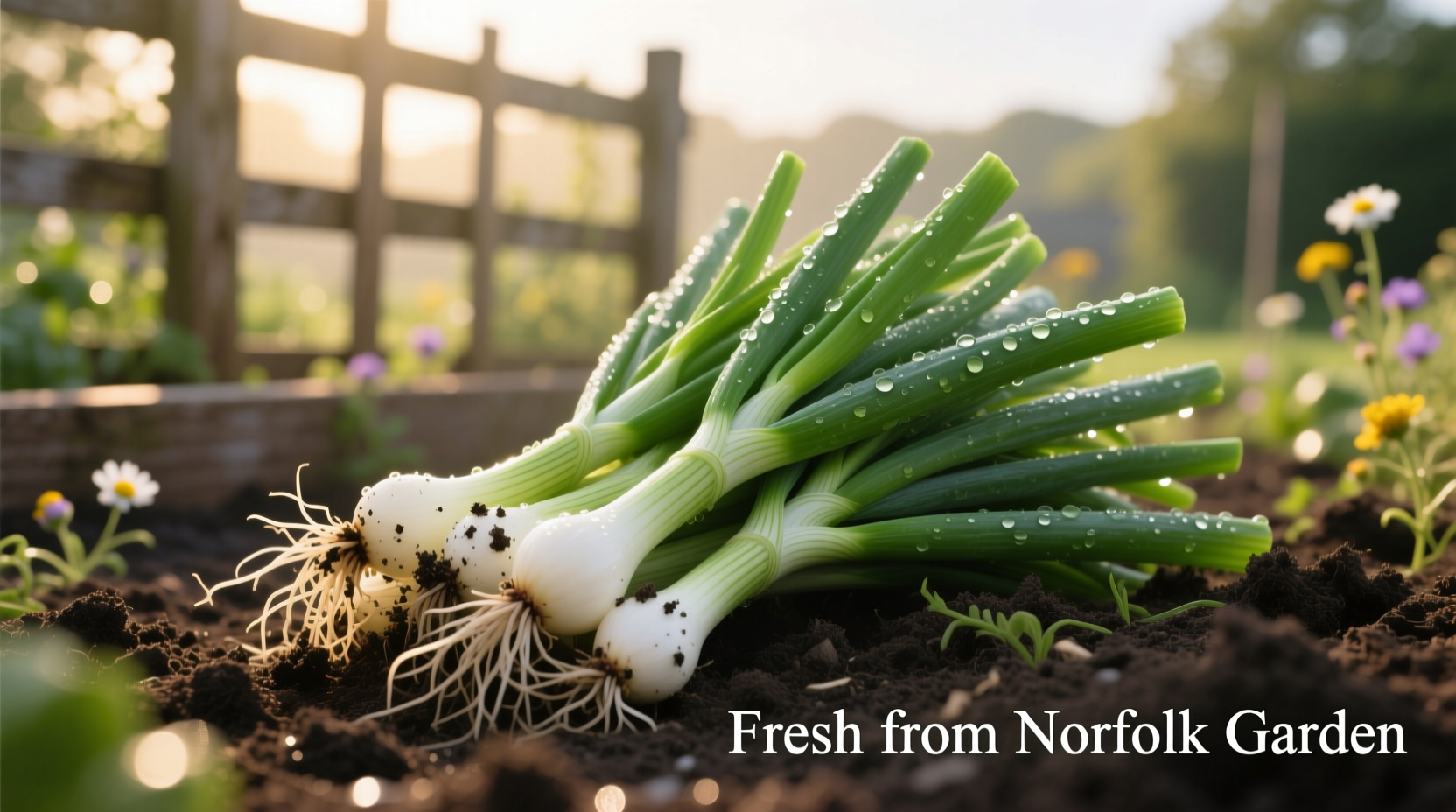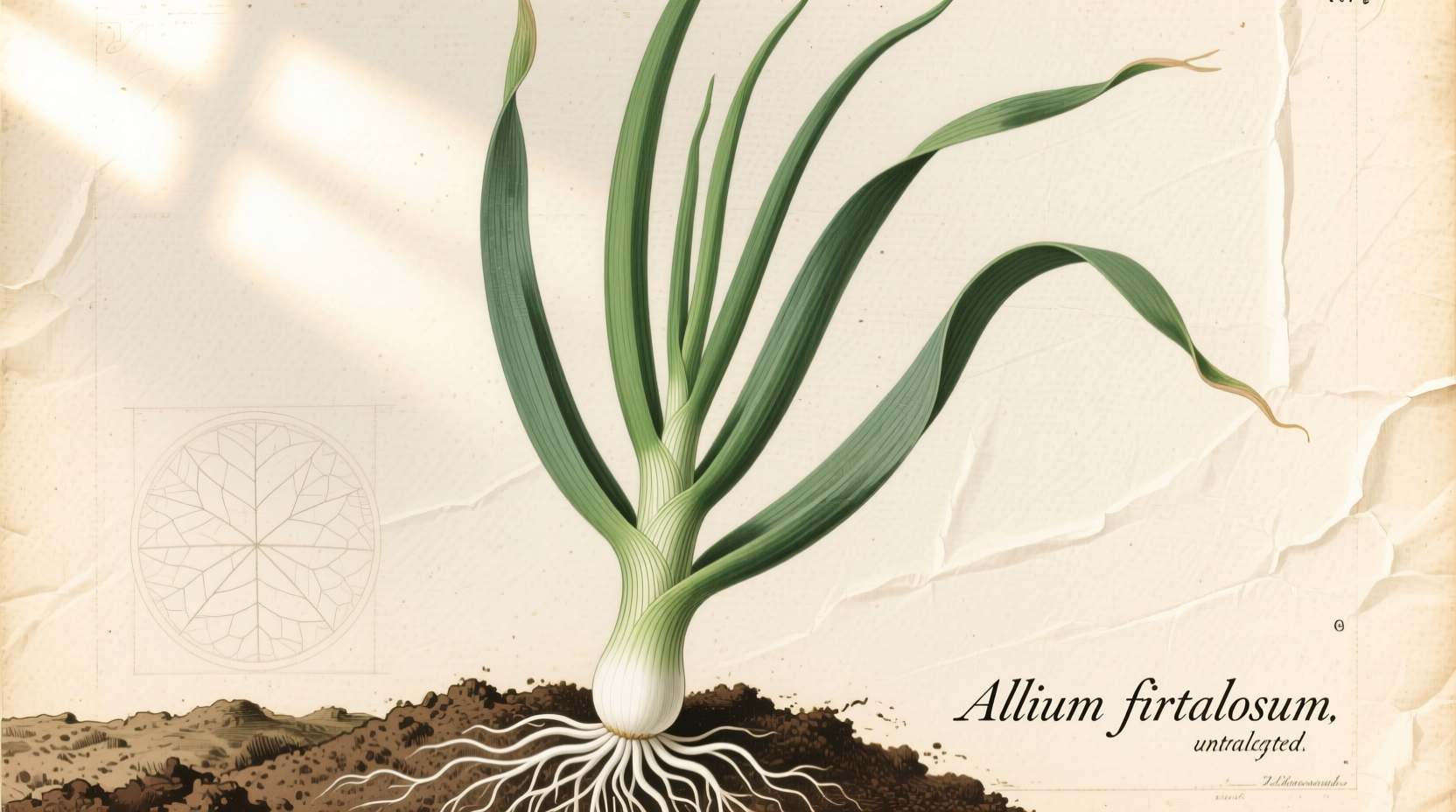Green onions thrive in Norfolk's temperate climate when planted at the right time with proper soil preparation. Whether you're gardening in Norfolk County, Virginia or Norfolk, England, understanding the regional growing conditions makes all the difference in producing crisp, flavorful scallions throughout the growing season.
Why Norfolk's Climate Matters for Green Onion Cultivation
Norfolk's coastal location creates a distinctive microclimate that affects green onion growth patterns. In Norfolk, Virginia (USDA Hardiness Zone 7b), gardeners benefit from mild winters but must navigate the region's high humidity and occasional temperature swings. The average last frost date falls between March 15-30, while the first frost typically arrives around November 15-30, creating a substantial growing window.
According to the Virginia Cooperative Extension, Norfolk's sandy loam soil requires specific amendments to optimize green onion growth. Local soil tests consistently show pH levels between 6.0-6.8 in the region, which happens to be ideal for Allium species like green onions. The area's average annual rainfall of 46 inches provides adequate moisture, though supplemental watering becomes crucial during the drier summer months.

Norfolk-Specific Green Onion Varieties That Thrive
Not all green onion varieties perform equally well in Norfolk's conditions. After reviewing multiple growing seasons and consulting with local extension offices, these varieties consistently deliver the best results:
| Variety | Best Planting Time | Days to Harvest | Norfolk Performance Notes |
|---|---|---|---|
| Evergreen Hardy White | Early spring or fall | 60-70 | Excellent cold tolerance for Norfolk's mild winters |
| Beltsville Bunching | March-April or August | 70-80 | Resists bolting during Norfolk's humid summers |
| Red Beard | Spring only | 50-60 | Best flavor when planted after last frost date |
| White Lisbon | Year-round (with protection) | 65-75 | Performs well in Norfolk's coastal conditions |
Step-by-Step Norfolk Green Onion Planting Guide
Follow this proven planting sequence specifically adapted for Norfolk gardeners:
Soil Preparation (2-3 Weeks Before Planting)
Norfolk's sandy soil benefits from organic matter additions. Mix 3-4 inches of compost into the top 6-8 inches of soil. For optimal results, incorporate bone meal (¼ cup per square foot) to support root development in our region's slightly acidic soil. Raised beds 6-8 inches high work exceptionally well in Norfolk's occasionally heavy clay pockets.
Planting Schedule Based on Norfolk Conditions
- Spring planting: Sow seeds 4-6 weeks before last frost date (late February to early March)
- Summer planting: Start new seeds in mid-July for fall harvest
- Fall planting: Plant in late August for overwintering (with row covers)
Plant seeds ¼ inch deep, spacing ½ inch apart in rows 12-18 inches apart. Thin seedlings to 1-2 inches apart when they reach 2 inches tall. Norfolk gardeners should consider using floating row covers during early spring planting to protect against unexpected late frosts.
Managing Norfolk-Specific Growing Challenges
Norfolk gardeners face particular challenges that affect green onion success:
Dealing with Norfolk's Humidity
The region's high humidity increases fungal disease risk. Prevent issues by:
- Watering at soil level in the morning (avoid overhead watering)
- Providing adequate spacing for air circulation
- Rotating crops annually (don't plant Alliums in the same spot more than once every 3 years)
Pest Management for Norfolk Gardens
According to Virginia Cooperative Extension data, these pests commonly affect Norfolk green onion crops:
- Thrips: Most problematic during dry spells - use insecticidal soap or neem oil
- Onion maggots: Plant after April 15 to avoid peak maggot activity
- Aphids: Spray with strong water jet or use ladybugs as natural predators
Selecting and Storing Green Onions in Norfolk
When choosing green onions at Norfolk farmers markets or harvesting your own:
- Look for crisp, bright green tops with firm white bases
- Avoid yellowing or slimy spots (common in Norfolk's humidity)
- Smaller diameter onions (¼ inch or less) offer the best texture
For storage in Norfolk's climate:
- Refrigerate in a perforated plastic bag with a damp paper towel
- Use within 7-10 days for peak freshness
- Freeze chopped onions for longer storage (works well with Norfolk's bumper crops)
Norfolk-Inspired Green Onion Recipes
Celebrate your Norfolk harvest with these regional flavor pairings:
Chesapeake Bay Scallion Dip
Mix 1 cup sour cream, ½ cup mayonnaise, ¼ cup fresh lemon juice, 3 chopped green onions, 1 tsp Old Bay seasoning, and salt to taste. Chill for 2 hours before serving with local oysters or Chesapeake blue crab.
Norfolk Spring Vegetable Stir-Fry
Sauté local asparagus, radishes, and peas with 3-4 sliced green onions. Finish with a splash of apple cider vinegar from nearby orchards for a true Tidewater flavor profile.
Seasonal Availability Calendar for Norfolk Gardeners
Understanding Norfolk's growing windows ensures continuous harvest:
- March-May: First spring harvest from early plantings
- June-July: Peak season for most varieties
- August-September: Fall planting for autumn harvest
- October-February: Overwintered crops with protection
According to data from the Norfolk Botanical Garden, green onions planted in late August with light frost protection typically yield harvestable crops through December in most Norfolk winters.
Frequently Asked Questions
When is the best time to plant green onions in Norfolk?
The optimal planting windows for Norfolk are late February to early March for spring harvest and mid-July for fall crops. Norfolk's last frost date typically falls between March 15-30, so planting 4-6 weeks before this date gives you the earliest harvest. Fall plantings in late August can produce crops through December with minimal frost protection.
How do I prevent green onions from bolting in Norfolk's summer heat?
To prevent bolting during Norfolk's humid summers, choose bolt-resistant varieties like Beltsville Bunching, provide consistent moisture (1 inch per week), and plant summer crops in partial shade. Mulching with 2 inches of straw helps maintain even soil temperature. Planting in mid-July for fall harvest avoids the hottest summer months when bolting is most likely.
What soil amendments work best for green onions in Norfolk's sandy soil?
Norfolk's sandy loam benefits from adding 3-4 inches of compost worked into the top 6-8 inches of soil. Incorporate bone meal (¼ cup per square foot) for phosphorus, and consider raised beds 6-8 inches high to improve drainage in areas with clay pockets. The Virginia Cooperative Extension recommends maintaining soil pH between 6.0-6.8 for optimal green onion growth in our region.
How can I extend my green onion harvest through Norfolk's winter?
You can extend harvest through Norfolk winters by planting in late August and using row covers when temperatures drop below 40°F. Cold frames or unheated hoop houses protect crops during occasional hard freezes. The Norfolk Botanical Garden reports that properly protected green onions typically remain harvestable through December, with occasional harvests possible through mild January days.











 浙公网安备
33010002000092号
浙公网安备
33010002000092号 浙B2-20120091-4
浙B2-20120091-4